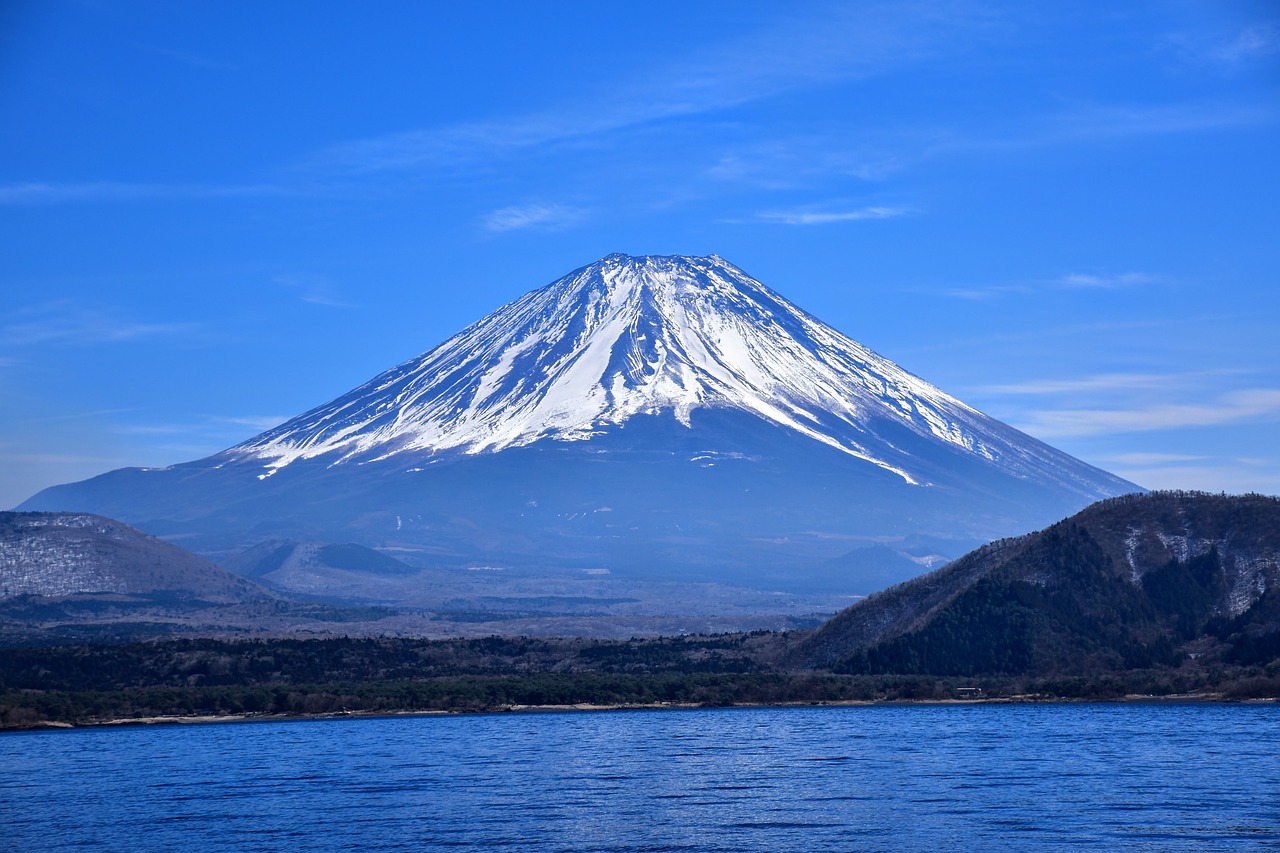Mount Fuji Climbing Experience
Mount Fuji, Japan’s highest peak at 3,776 meters, offers an unforgettable adventure. While it may appear more attractive from afar, the experience of climbing in the early morning alongside hikers from around the world, admiring breathtaking views, is undoubtedly a once-in-a-lifetime experience.
Key Information
- Official climbing season: Early July to mid-September
- Best time: Weekdays in early July (to avoid peak crowds)
- Difficulty: No professional skills required, but high physical demand
- Climbing routes: 4 main trails, with Yoshida Trail being the most popular
- Time required: Typically a two-day, one-night trip
Brief History of Mount Fuji
Mount Fuji is a symbol of Japan and has been considered sacred since ancient times. It’s a dormant volcano that last erupted in 1707. For centuries, Fuji has been a source of inspiration for artists, poets, and pilgrims, and today it’s a popular destination for visitors from around the world.
Main Attractions
Summit Crater
Reaching the 3,776-meter summit is the ultimate goal for every climber. The crater rim is about 4 kilometers in circumference and takes about an hour to walk around. Here, you can witness spectacular sunrise views, overlooking a sea of clouds and distant landscapes. There’s also a post office at the summit where you can send postcards with a special postmark.
The path around the crater’s edge can get crowded, especially during sunrise. It’s advisable to arrive early to find a good spot. Remember to dress warmly as temperatures at the summit are usually below freezing, and strong winds make it feel even colder. Don’t forget to bring a camera to capture this unforgettable moment, but be mindful of your equipment as the cold can affect battery life.
Mount Fuji 5th Station
The 5th station is where most climbers begin their ascent, at an altitude of about 2,300-2,400 meters (depending on the specific trail). Here you’ll find restaurants, shops, and information centers – it’s the last place to fully prepare before entering the true alpine environment.
The 5th station offers spectacular views, and on clear days, you can see distant mountain ranges and forests. It’s also a good place to acclimatize to the altitude. It’s recommended to spend some time here, drink water, do some light stretching exercises, and prepare for the climb ahead.
Mountain Huts
The mountain huts along the way are an integral part of the Mount Fuji climbing experience. These simple shelters, usually located between the 7th and 8th stations, provide places to rest, sleep, and eat. While conditions are basic, spending a night on the cold mountain and interacting with climbers from around the world is a unique experience.
The huts typically offer hot meals and drinks, which are a great comfort in the cold mountain environment. Many climbers choose to stay overnight in a hut to reach the summit before sunrise the next morning. It’s advisable to book in advance as huts often fill up during peak season.
Best Time to Visit
The official climbing season runs from early July to mid-September. During this period, the mountain is usually free of snow, the weather is relatively mild, public transportation is convenient, and mountain huts are open.
- Yoshida Trail: July 1 to September 10
- Subashiri, Gotemba, and Fujinomiya Trails: July 10 to September 10
To avoid the most crowded periods (Obon week in mid-August and weekends), it’s recommended to climb on weekdays in early July. The crowds are smaller then, but the weather might be less stable than later in the season.
Transportation Guide
Getting to Mount Fuji
- From Tokyo:
- Take a direct highway bus from Shinjuku to Mount Fuji 5th Station, about 2.5 hours, 3,900 yen one-way.
- Or take the JR Chuo Line to Otsuki Station, transfer to the Fujikyu Line to Kawaguchiko Station, then take a bus to the 5th Station.
- From Osaka:
- Take the Shinkansen to Mishima Station, then transfer to a bus to the 5th Station.
- Or get off at Shin-Fuji Station and transfer to a bus.
Transportation on the Mountain
- During climbing season, roads to the various 5th stations are closed to private cars, and access is only possible by bus or taxi.
- The bus from Kawaguchiko Station to Fuji Subaru 5th Station takes about 50 minutes and costs 1,800 yen one-way.
Opening Hours and Admission Information
- Climbing season: Early July to mid-September
- Entrance fee: 1,000 yen (voluntary donation)
- Additional fee for Yoshida Trail: 2,000 yen (mandatory), must be reserved online or purchased on-site (daily limit of 4,000 people)
Visitor Tips
- Be well-prepared: Bring warm clothing, waterproof gear, food, and water.
- Acclimatize slowly: Climb at a slow pace and rest frequently to avoid altitude sickness.
- Use a walking stick: Can be purchased at the 5th station and stamped at each station as a souvenir.
- Follow the rules: Don’t pick plants, take stones, or camp on the mountain.
- Carry cash: Facilities on the mountain don’t accept credit cards.
- Respect the environment: Take all your garbage with you.
Official Website
Official Website for Mt. Fuji Climbing
Conclusion
Climbing Mount Fuji is a unique experience that challenges you and brings you closer to nature. Whether you’re an experienced climber or a first-timer, Mount Fuji will leave you with unforgettable memories. With proper preparation and respect for nature, you’ll find that reaching the summit of Japan’s highest peak is one of the most exciting and rewarding experiences of your life. Don’t miss this opportunity – start planning your Mount Fuji adventure today!
